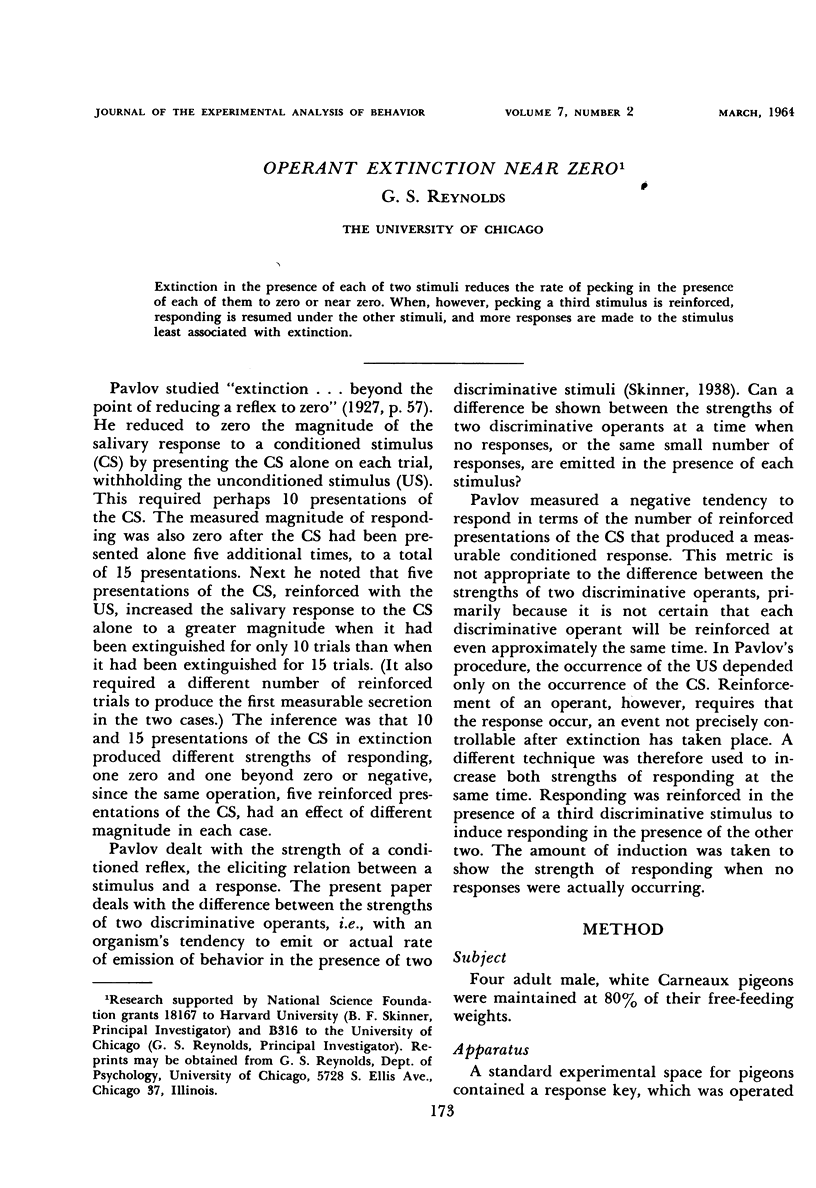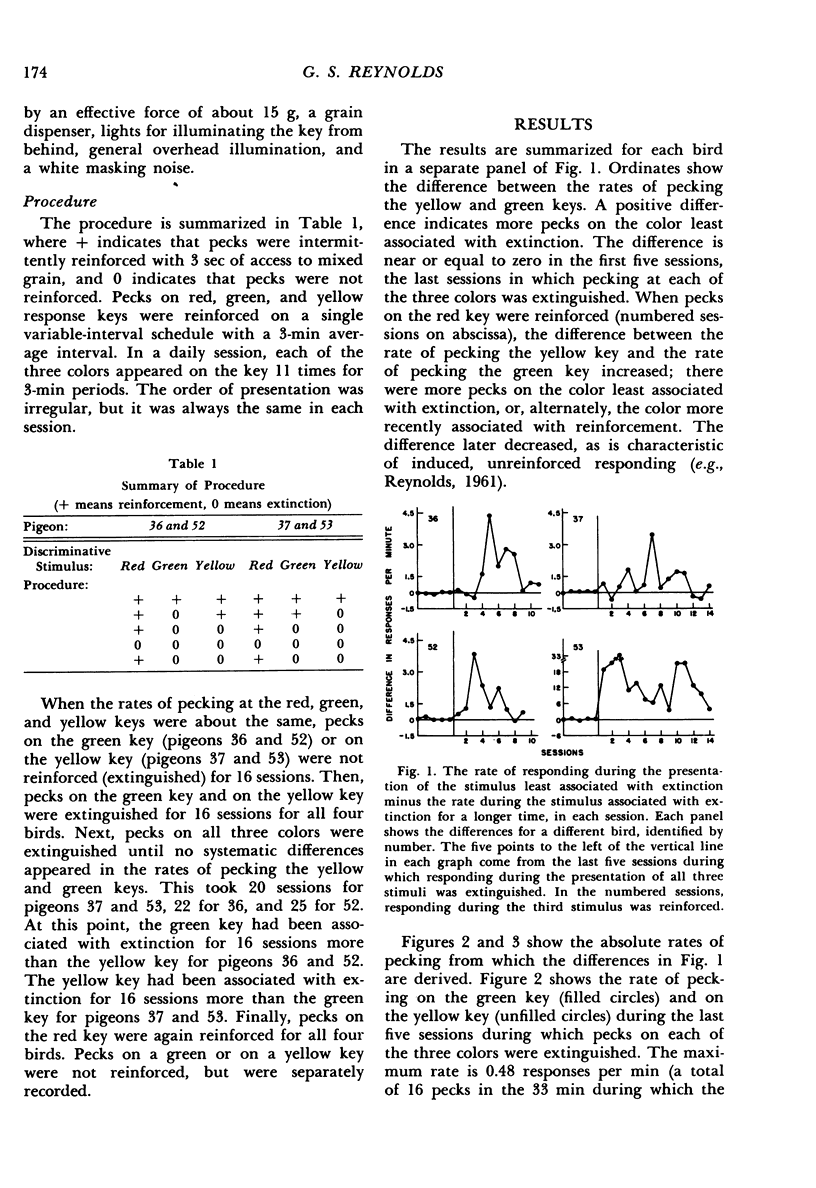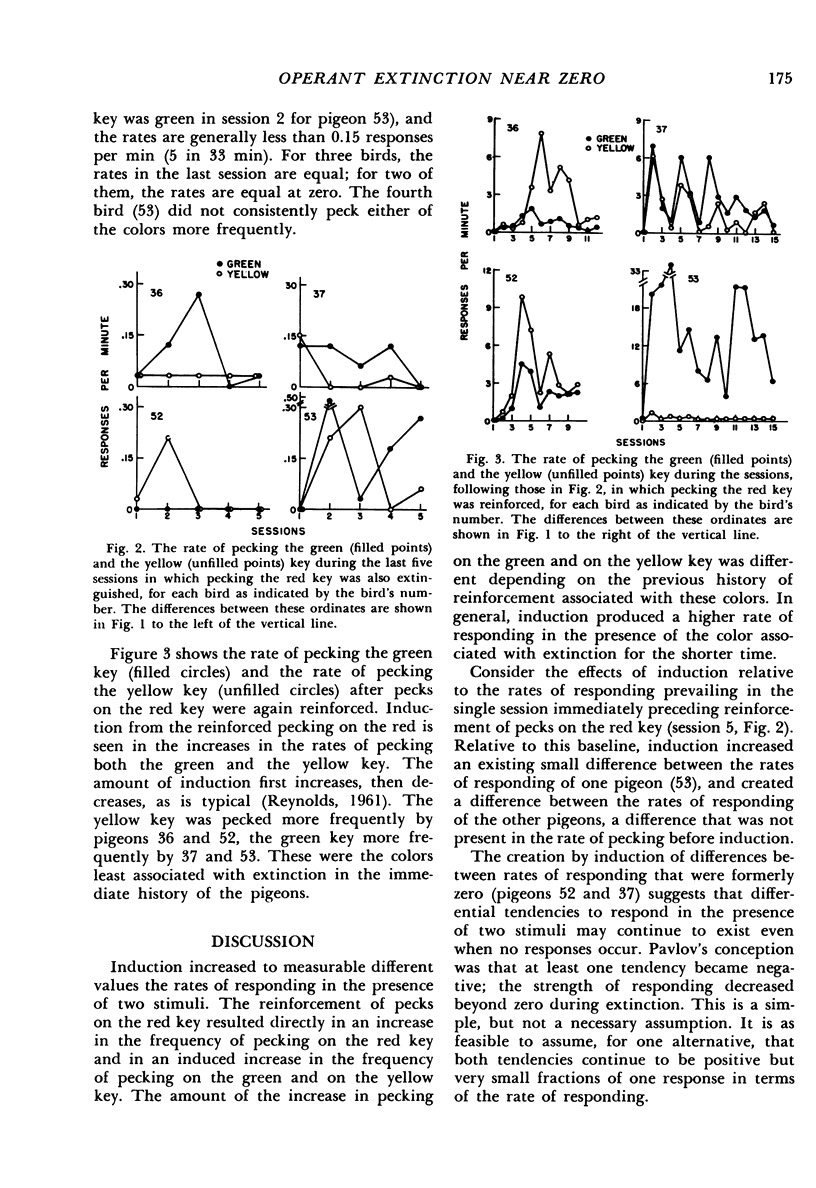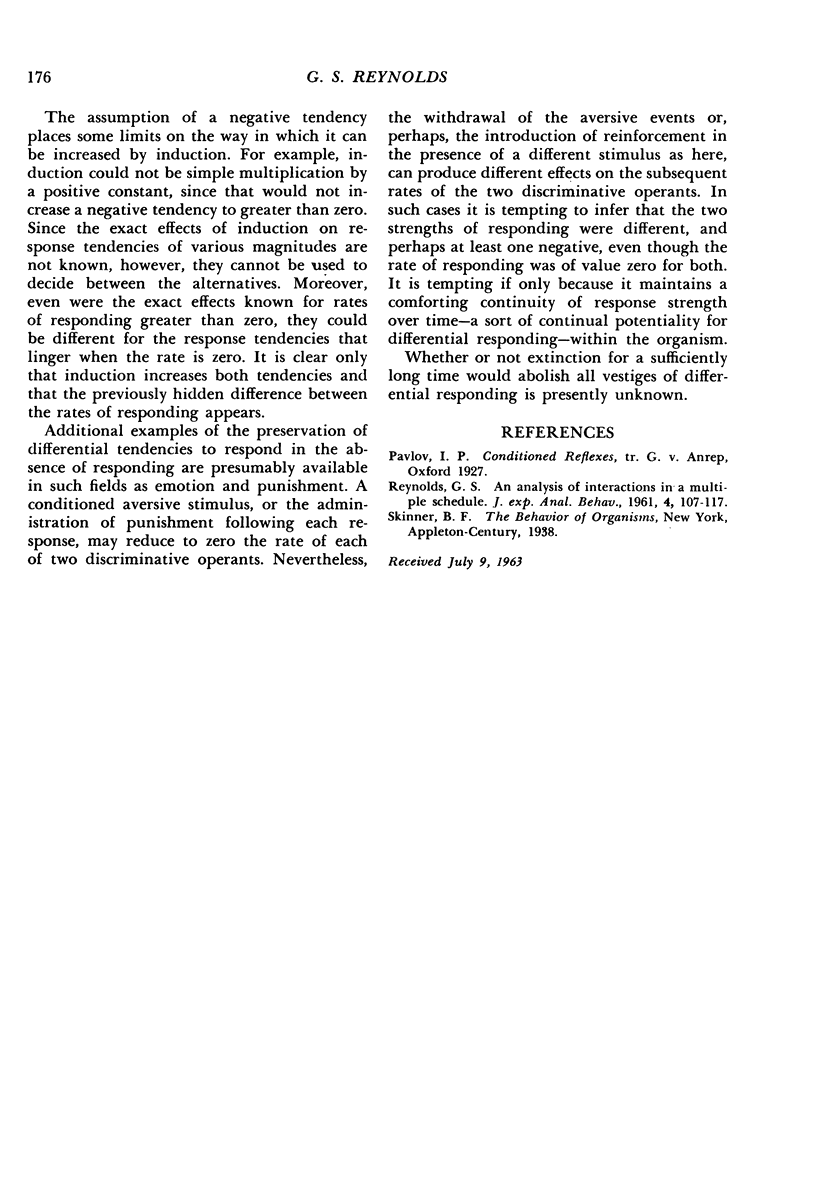Abstract
Extinction in the presence of each of two stimuli reduces the rate of pecking in the presence of each of them to zero or near zero. When, however, pecking a third stimulus is reinforced, responding is resumed under the other stimuli, and more responses are made to the stimulus least associated with extinction.
Full text
PDF



Selected References
These references are in PubMed. This may not be the complete list of references from this article.
- Reynolds G. S. An analysis of interactions in a multiple schedule. J Exp Anal Behav. 1961 Apr;4(2):107–117. doi: 10.1901/jeab.1961.4-107. [DOI] [PMC free article] [PubMed] [Google Scholar]


